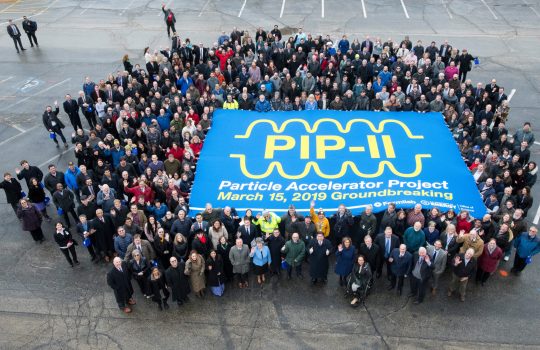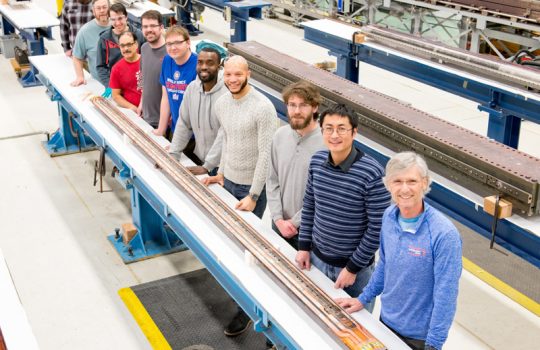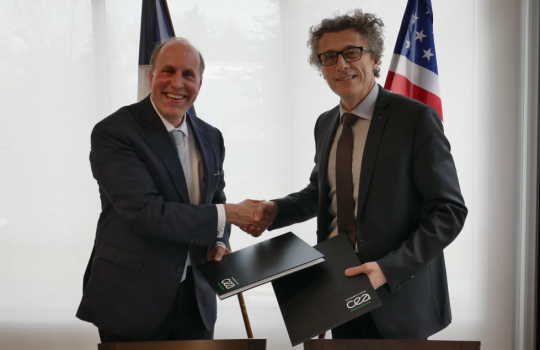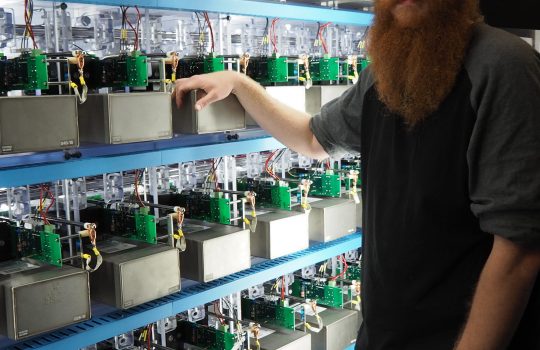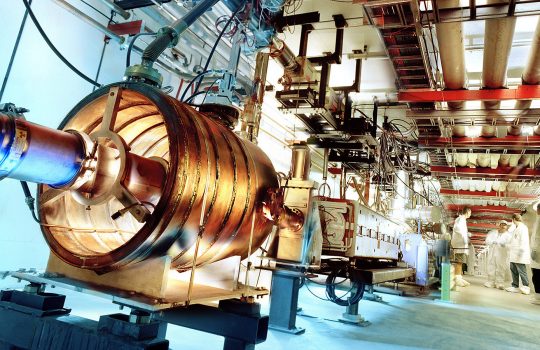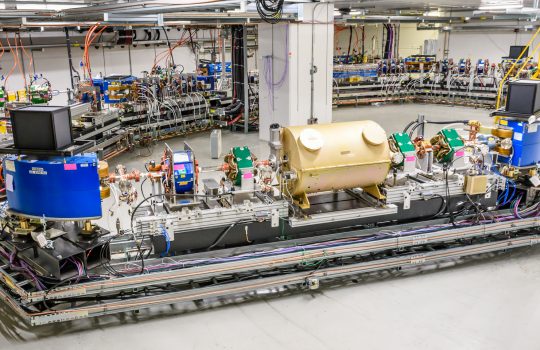Fermilab, international partners break ground on new state-of-the-art particle accelerator
- accelerator
- accelerator technology
- Deep Underground Neutrino Experiment
- DUNE
- neutrino
- PIP-II
- SRF
- SRF technology
- superconducting radio-frequency technology
The March 15 ceremony marks the start of work on PIP-II, a major new accelerator project at Fermilab. The PIP-II accelerator will power the long-term future of the laboratory’s research program, including the international Deep Underground Neutrino Experiment.

